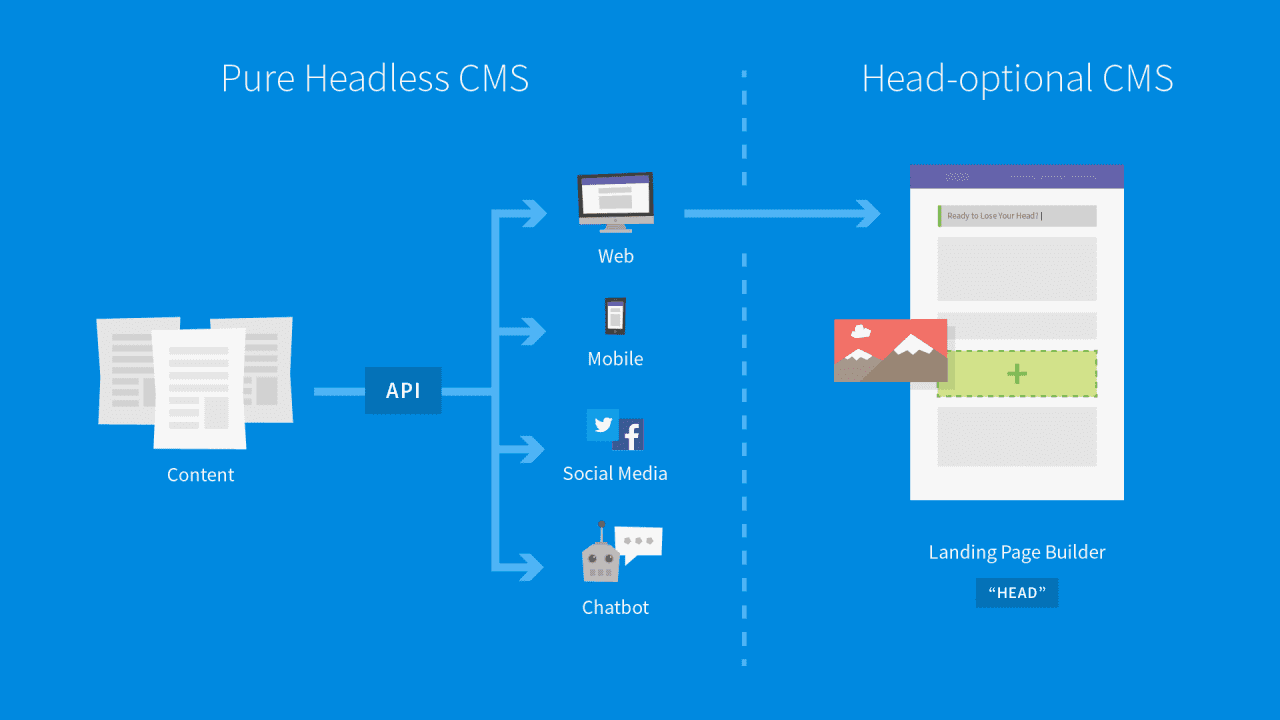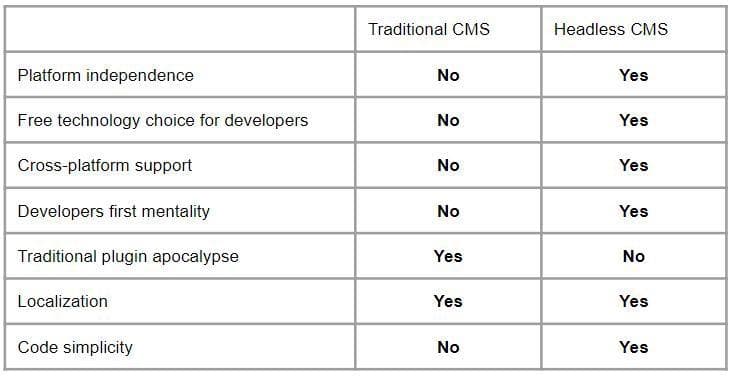Headless CMS — A Body without Head!
The logic of traditional CMS combines the back-end and front-end parts of one system. In this case, the content turns out to be associated with specific technologies, architecture and patterns of the client-server application.
Headless CMS is a fundamentally different management system. Typically, it is only responsible for generic content that can be used on all platforms. The backend approach is not associated with the frontend (“head”).
The logic of Headless CMS is such that different heads can be attached to the “body” if necessary. This allows you to use a single backend to manage a site (or sites) and a mobile application, as well as automate the distribution of content across all available sites and devices.
As a result, the resources spent on web development are minimized. And the management of different platforms is carried out centrally from a single interface, which is convenient. At the same time, the content is flexibly configured for each individual channel.
How it works?

The main value of the approach implemented in Headless CMS is omnichannel readiness. Content in a universal format can be used on a website, in a mobile application, in the interface of various digital devices. This expands business opportunities, allows you to flexibly use different solutions (integrating them one by one or immediately using all the necessary ones).
Reducing development costs is the second major benefit. Under certain conditions, Headless CMS is cheaper to install and configure. Developers do not need to master the control system “from and to”, it is enough to understand the administrative interface and API.
Accelerating the implementation of new projects is also an important plus for business. Due to the flexibility of using content, in Headless CMS, the process of launching a website or application takes less time. In addition, the industry standards RESTful and GraphQL provide a quick start when deploying a new project: developers do not need to lay the architectural foundations and master tooling around these technologies.

Source : https://villevuorinen.com/
Why should you use a Headless CMS?
- For users of the administrative panel, the convenience of working in the systemis important. Centralized management makes it easy to interact with different platforms. You can add and edit content, manage settings in one familiar administrative interface.
- For a business that quickly responds to changes, the simple scalability of the content management system is of great importance. The statically generated content from the CMS lends itself easily to scaling through the CDN.
- Content is easily transferable to new interfaces. For example, to implement an application for iOS, if there are web and Android versions, it is not required to create a new backend — one more client application is simply added to the existing scheme.
- At the same time, developers in any programming language (Ruby, PHP, Java, Swift) can use the API when manipulating the system, thus solving the problem of incompatibility of different languages in one product. This makes it possible to use the latest technology and be creative in the development process.

Types of Headless CMS
There are many CMS's that support Jamstack logic. The essence of the approach is to pre-render files and transfer them directly from the CDN, bypassing the webserver.
All such CMS are presented at headlesscms.org. Most of them are open source solutions.
Headless CMS can involve self-deployment on a server or upload to a CDN service. Some systems work through cloud providers. Many people support creating a model and then filling it with content. Another selection criterion: using GraphQL or REST API (or both in one product).
Headless CMS — Why the future belongs to that?
The innovative approach implemented in Headless CMS takes into account the realities of today when time dictates the fastest possible introduction of new technologies and the expansion of digital channels of interaction with the audience. The principle of separation of the content itself and the client interface allows you to accelerate development and scale with resource savings. And managing different platforms becomes more convenient and efficient.
Conclusion
With the further development of digital products, Headless CMS is likely to be more preferred over traditional WordPress or Joomla. There is every reason to believe that the future belongs to the “headless” systems.
